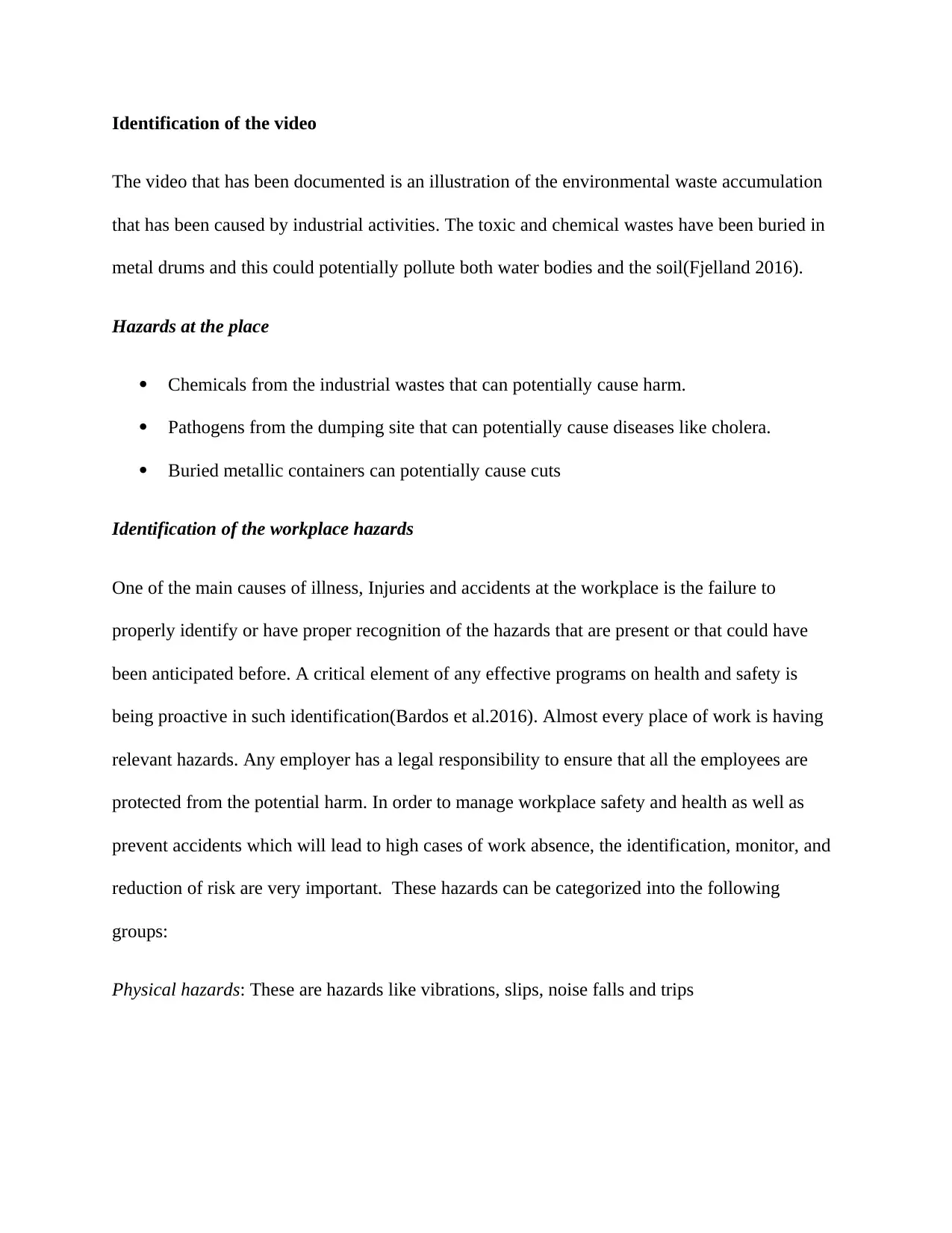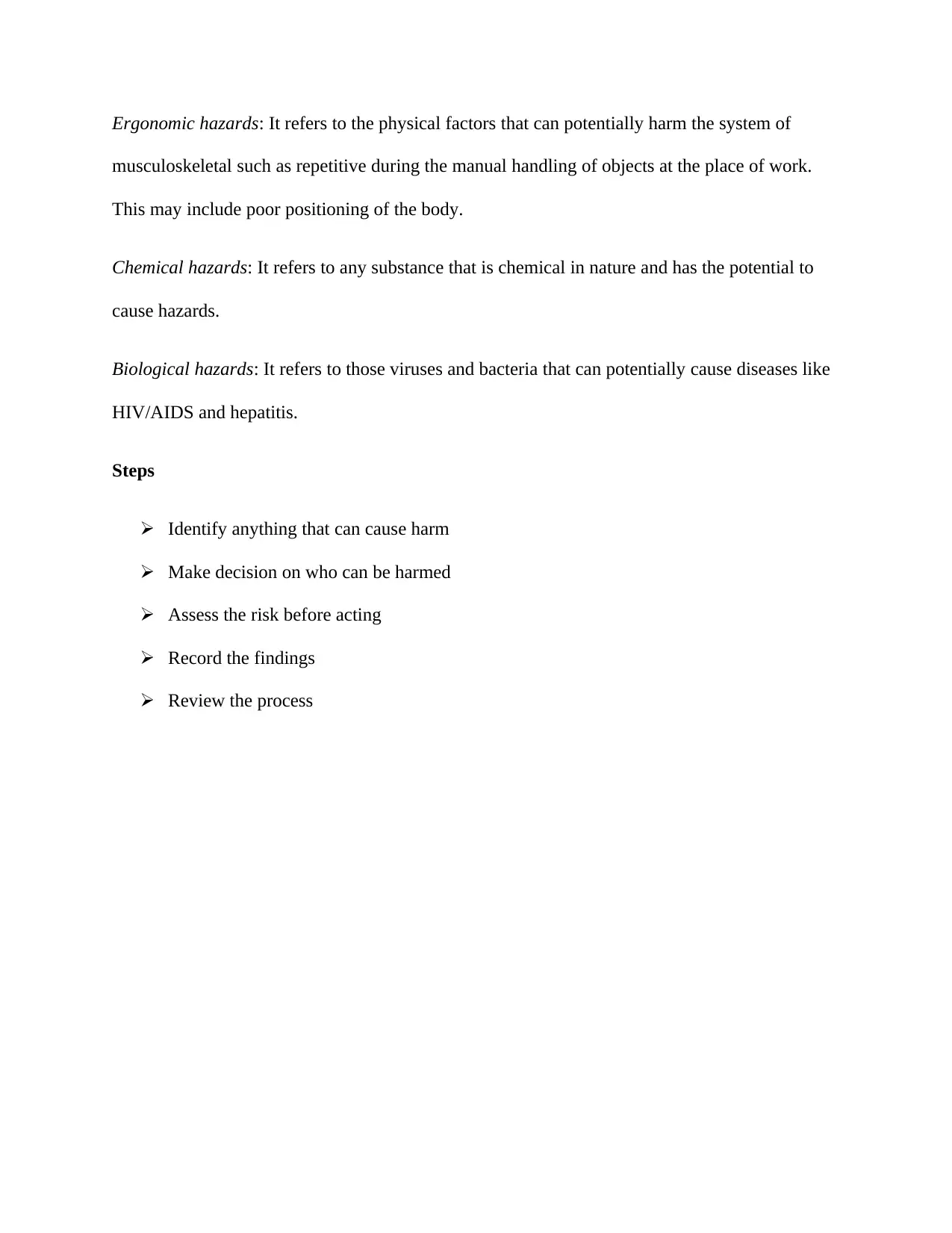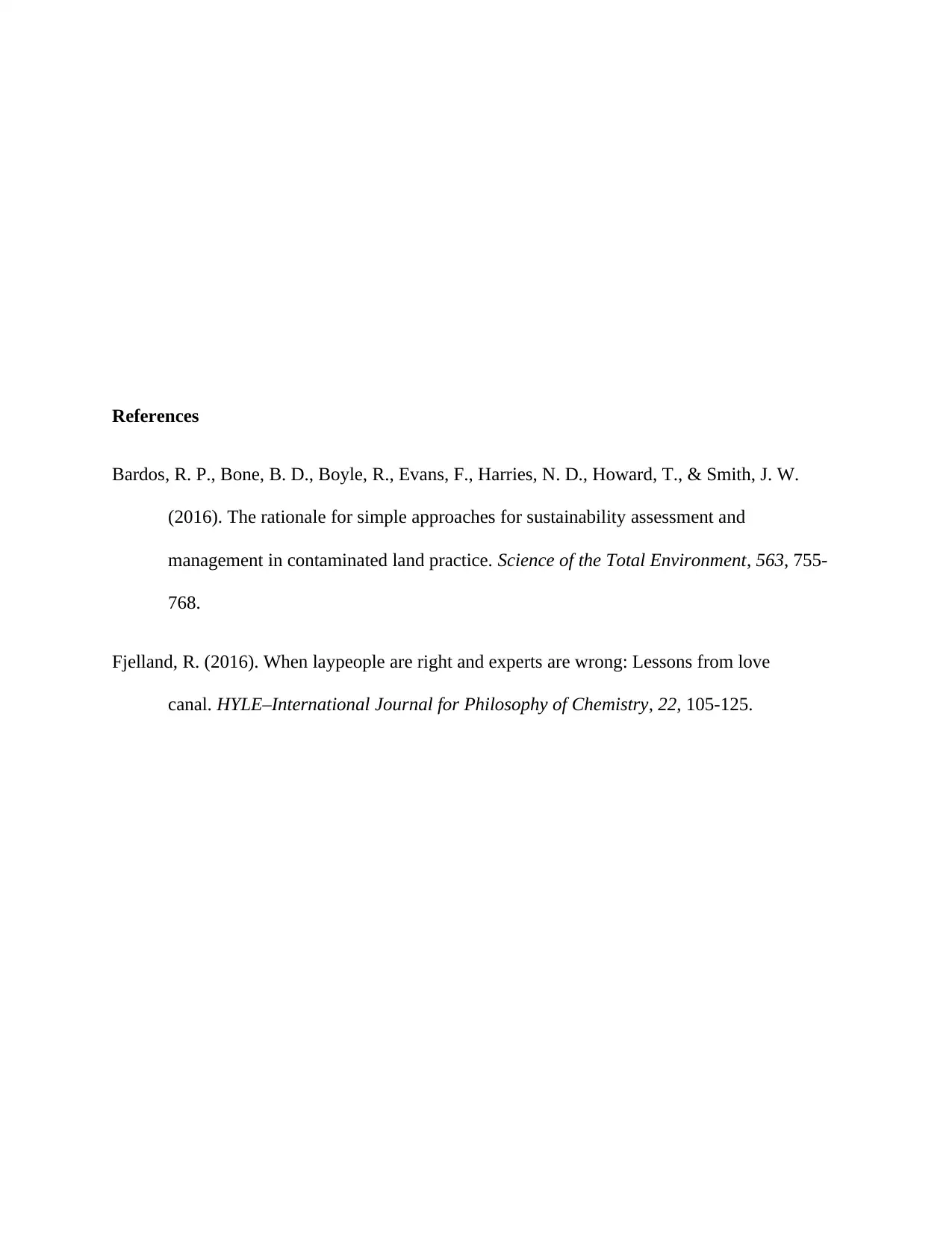Environmental Hazards: Analysis of the Love Canal Video Assignment
VerifiedAdded on 2023/01/19
|4
|462
|38
Homework Assignment
AI Summary
This assignment analyzes the Love Canal video, focusing on the identification of environmental and workplace hazards. The assignment identifies the hazards presented in the video, which include chemical and physical dangers from the buried waste. It also outlines the steps to recognize hazards in a work environment, emphasizing the need to identify potential harm, assess risks, and record findings. The assignment highlights the importance of proactive hazard identification to prevent accidents and ensure workplace safety. The document also provides a review of the various types of hazards that can be encountered in a work environment, including physical, ergonomic, chemical, and biological hazards. The assignment concludes by emphasizing the need for continuous monitoring and reduction of risks.
1 out of 4











![[object Object]](/_next/static/media/star-bottom.7253800d.svg)